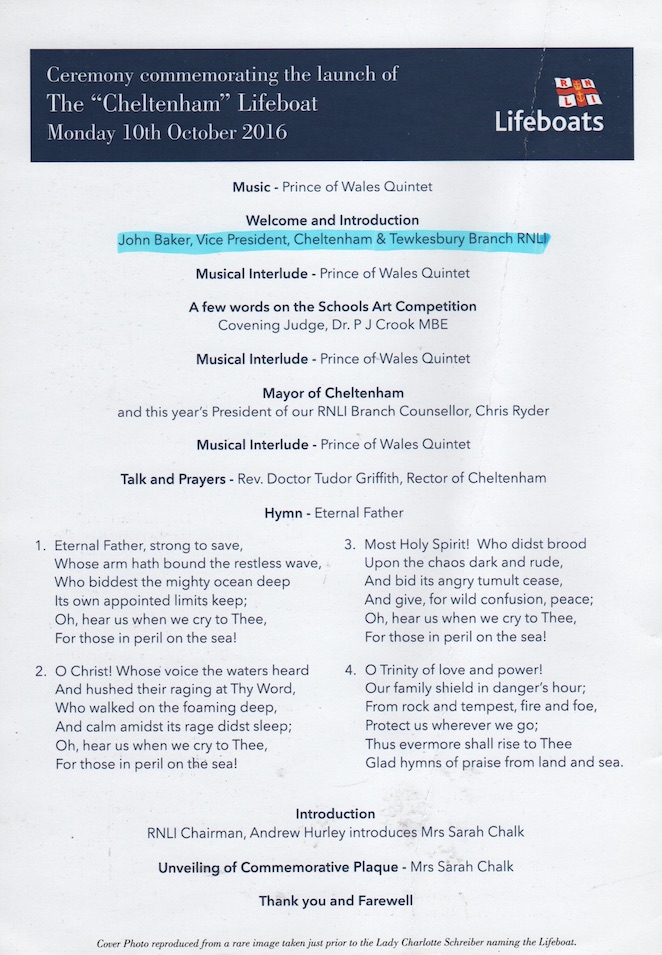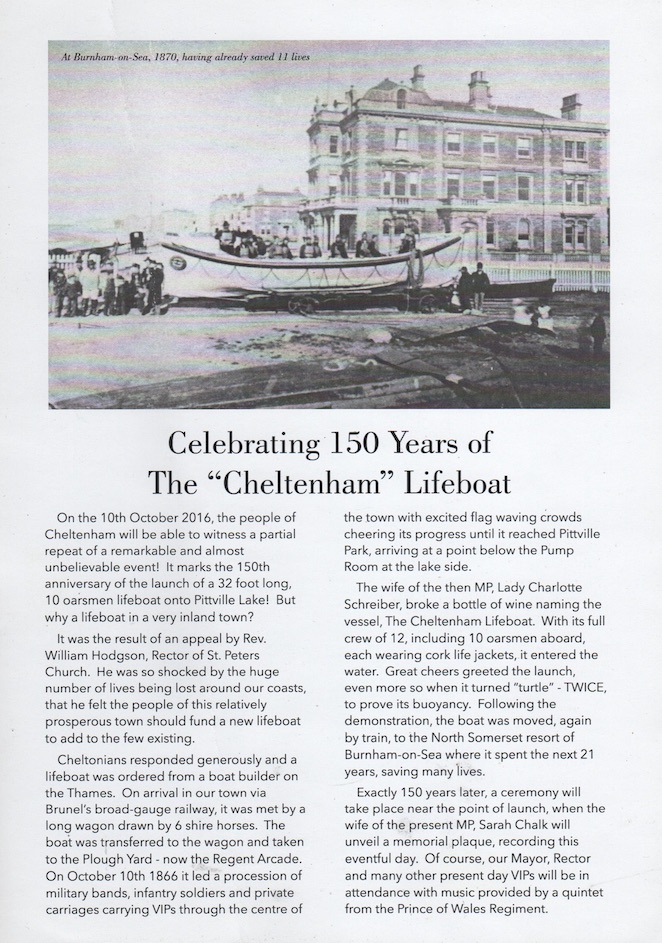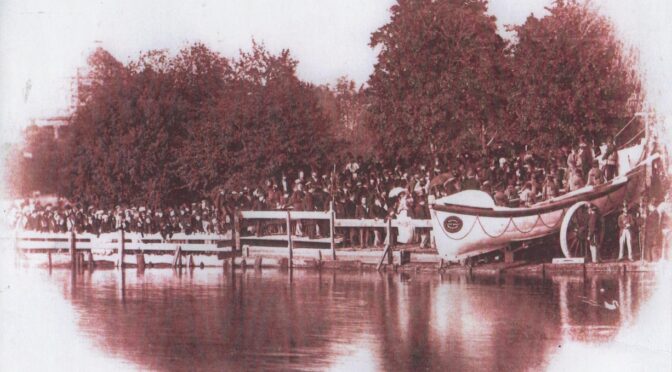The image above shows the naming ceremony and the Cheltenham being launched at Pittville Lake, Cheltenham, on October 10th 1866, by Lady Charlotte Shrieber. The boat was funded entirely by people of that town. It was later transported to Burnham by rail. There is an entry in the diary of the headmaster of St Andrew’s School stating that the school was given a day off on 12th October to see the ceremonial launch of the boat at Burnham.
The Cheltenham was a self-righting craft of 32 x 7½ feet pulled by 10 oars.
Most of the services done by the Cheltenham were to small sailing vessels trading with Bridgwater and Highbridge. Her first service took place on 21st September 1869 when she saved three people from the Watchet schooner ‘Prudence’. This vessel had attempted to enter the Parrett at too low a tide and with a strong north-west wind blowing. She grounded and dragged 3 miles across the sands to Steart Island where she stuck fast. When rescued, her crew were clinging precariously to her bowsprit whilst the seas made a clean breach over her decks. A few days later on 3rd October it was the Dutch schooner ‘Talkeina Messenia’ out of California to Highbridge that was in trouble. She grounded on the Gore Sand and as no other boat could venture out in the heavy seas the Cheltenham was launched to assist in saving the crew of 8.
On November 17th 1871 another mishap occurred in Bridgwater Bay. The Cardiff barque ‘Storm’, left at anchor with a crew of only 5 men, under the mate, parted her cable in a strong wind and drove onto rocks. The Cheltenham was launched in response to her distress signals but was towed to the barque by the tugboat ‘Victor’ and stood by until the wind dropped and the tide fell, when there was no further danger.
Many more rescues were made by “The Cheltenham” during her twenty-one years of service, but the last rescue was on 9 December 1886. It was to the Norwegian barque “Fremad” carrying timber from Nova Scotia for Bristol. In a heavy west-by-north gale she had been driven up the Bristol Channel, her mate being washed overboard off the Mumbles. Her mizenmast was carried away in a squall, and eventually all her sails had gone, her rudder also being disabled. Driving in this unmanageable state, she stranded at the back of Stert Island. Rowing into the teeth of the gale the lifeboat got to the scene in two hours, and was able to save the crew of eleven.
Thanks to June Hill for kind permission to use extracts from her book ‘The History of the Burnham Lifeboats’.
Below are pages from a programme for the 150th Anniversary celebration at Cheltenham in 2016.



Back to lifeboats main page.

